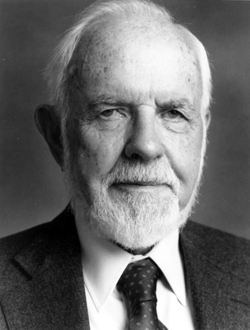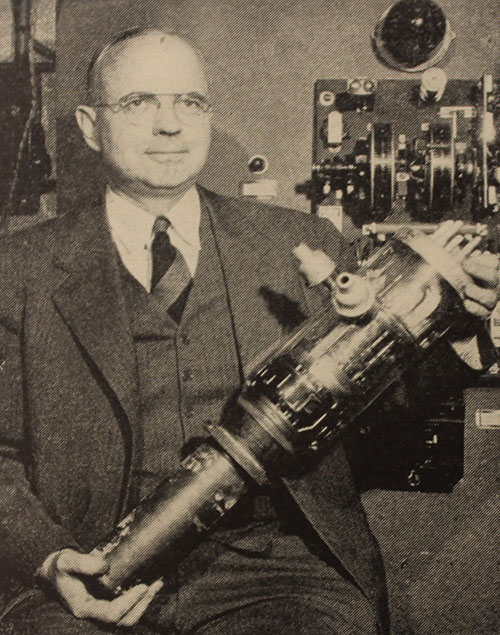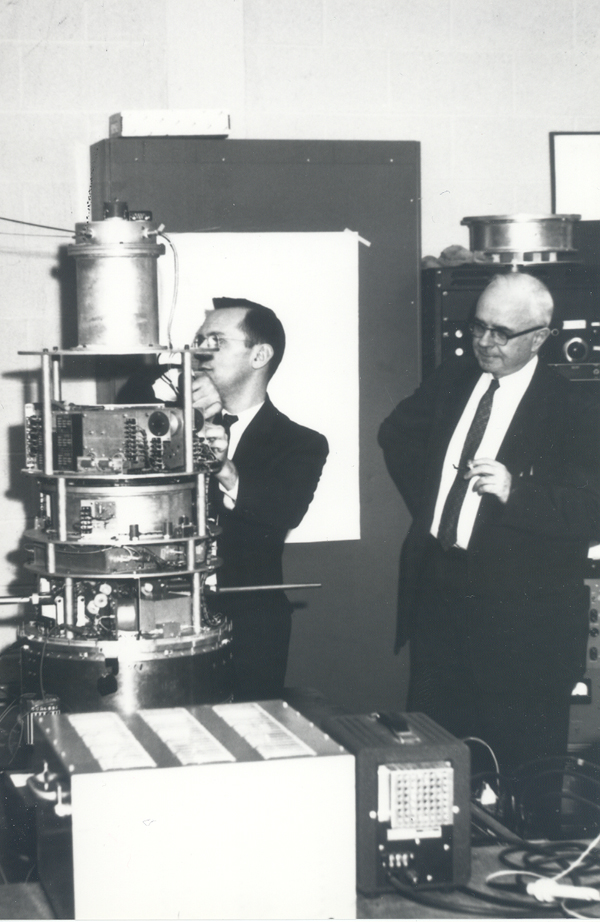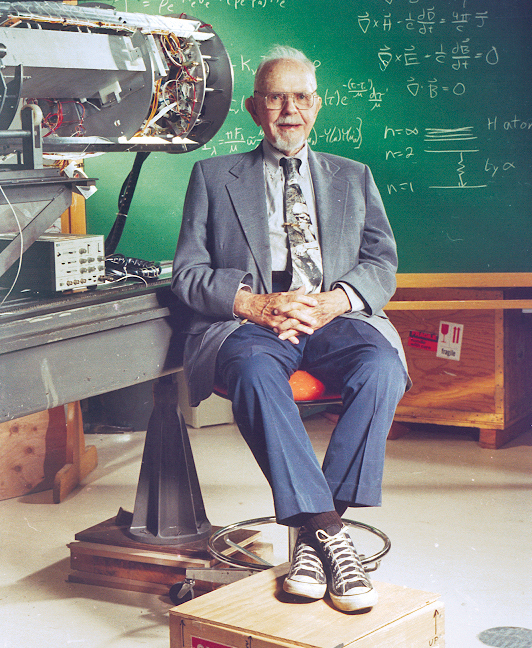William Gould Dow

 Enlarge
Enlarge
The man who revolutionized how ECE does research, Prof. William Gould Dow was one of the department’s most influential leaders. His forty years at Michigan that began with graduate study in 1926 and ended as department chair in 1965 saw change that would shape the department’s growth through the rest of the 20th century.
A native of Faribault, Minnesota, Dow received his bachelor’s degree from the University of Minnesota. During World War I, he was a lieutenant in the US Army Corps of Engineers, with stints at Camp A.A. Humphreys, Virginia and the National Bureau of Standards. Upon leaving the Army in 1919, he took on a variety of sales and marketing positions, mainly selling electrical equipment for the Westinghouse Electric Corporation. (Dow would later say he was better off in two years at U of M, than all his years in marketing.)
Dow finally made his way to Michigan to pursue more education; little did he know at the time, he would stay for 38 active years of service: first as an instructor (1926), through to Professor (1945), and finally Chair (1957-64).
One of Dow’s first major projects was sponsored by the Fisher Body Division of GM and earned him several patents. He investigated how to use high frequency power for welding of sheet metal in automobile manufacturing; once the US entered World War II, however, it became more useful for making airplanes.

 Enlarge
Enlarge
Dow’s tenure was only briefly interrupted in the 1940s, when went to work directly in support of the war effort at the Harvard Radio Research Laboratory. The laboratory was dedicated to finding effective radar countermeasures, including both jamming of enemy radar signals and determining the location of enemy radar installations. His work took him to London, where he narrowly avoided a V-2 rocket attack. The radar-jamming countermeasures Dow worked on were nearly 100% effective, and were credited with saving the lives of many Allied pilots.
Upon his return, Dow made a very important mark on the department by bringing military and government research contracts to the university.
Using the connections he had made during the war, Dow learned that the Army and Navy had begun a joint research program involving captured V-2 rockets in 1946. He arranged to attend the second meeting of the V-2 Upper Atmosphere Research Panel, and would remain a member of the panel until it ceased operation in 1960.

 Enlarge
Enlarge
The panel required all of its members to be actively engaged in relevant research, and as his first experiment, Dow chose to measure ion and electron temperatures in the ionosphere under contract to the Air Force, and the experiment was successfully launched that same year. Another early experiment provided increased accuracy for estimates of the neutral density of the atmosphere, which is a critical factor for spacecraft to re-enter.
Dow was a charter member of the Rocket and Satellite Research Panel, a group of distinguished scientists and engineers who guided the nation’s space program through its infancy. The group of 27, including Dow and three other Michigan faculty, visited Washington in 1957 to urge the funding of scientific exploration in space. They asked for $10B over the span of a decade to explore outer space. Less than a year later, NASA was formed.
In addition to these activities, Dow was largely or solely responsible for creating and organizing at least 13 laboratories and research units throughout the College of Engineering, including the Solid-State Electronics Laboratory, the Environmental Research Institute of Michigan (ERIM), the Willow Run Laboratories, the Space Physics Research Laboratory, the Cooley Electronics Laboratory, and DRDA (Division of Research Development and Administration). Many of these units still exist and thrive today.
Dow was a pioneer in electronic engineering education. He introduced into the curriculum vacuum tube and nuclear theories, and the use of solid-state devices and computers. He introduced a course in Industrial Electronics which focused on the use of thyratrons and ignitrions in Michigan manufacturing industries. He also introduced new graduate courses in: Theory of High-Vacuum Electron Tubes; Gaseous-Conducting Electronic Apparatus; Microwave Electron Tubes; and Electron Beam Tubes. He also taught extension courses for engineers in industry during the evening mainly in Detroit between 1937 and 1942.
He wrote a classic textbook on electronics, Fundamentals of Engineering Electronics, 1937, which remained a standard for many years. During the mid 1950’s, he was active in establishing the Nuclear Engineering Department, and in incorporating instruction in computer engineering into the electrical engineering curriculum. He received the 1963 IEEE James H. Mulligan, Jr. Education Medal.
I am an optimist. In the long run, the pessimists may be right, but I’m having more fun.
William Gould Dow
He worked during his entire career, for more than 60 years, to make graduate education in this country the most advanced in the western world, based on pure and applied research. He insisted that in defense and advanced technologies, the United States should be second to none.

 Enlarge
Enlarge
When Dow retired from the chair position in 1965, he still had a 30-year career ahead of him – an amazing thing to say for a 70-year old! For the rest of the 1960s he had a part-time appointment as a Senior Research Geophysicist in the U-M Space Physics Research Lab. He would continue as an advisor to the Environmental Research Institute of Michigan, finally helping to establish it as an entity separate from U-M in 1972. He became a member of its board of trustees.
In 1981 he patented one of his hallmark accomplishments, a trochoidal nuclear fusion reactor, which is a device that theoretically could be used to produce electric power from nuclear fusion.
By the time he turned 100, Dow was still in his office at ERIM and his retirement office in the Nuclear Engineering department two days a week. Dow passed away in 1999, at the age of 104.
To memorialize his contributions to education and research in the department, ECE later established the William Gould Dow Distinguished Lectureship. This is the highest external honor bestowed by the Department of Electrical Engineering and Computer Science. The Lectureship was established by donations from students and friends of William Gould Dow, and recognizes the accomplishments of external individuals who have made outstanding contributions in the field of Electrical Engineering and Computer Science.
References and Further Reading
William Gould Dow Distinguished Lectureship
William Dow on University of Michigan Faculty History Project
 MENU
MENU